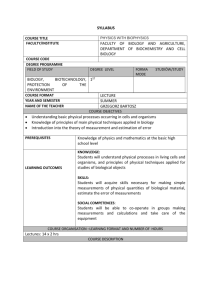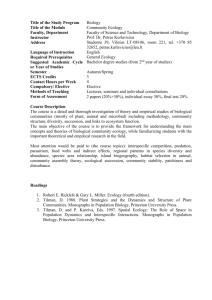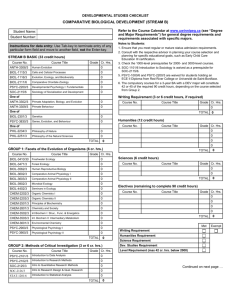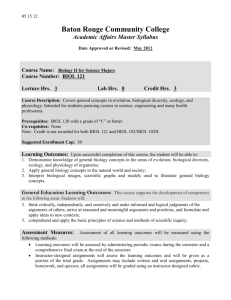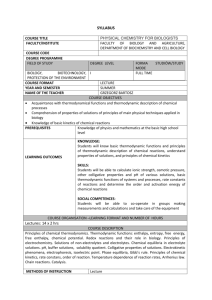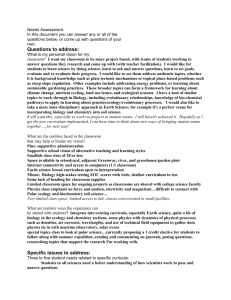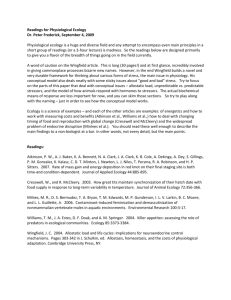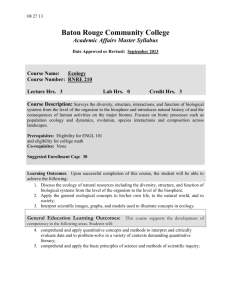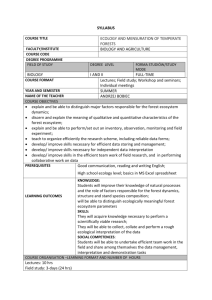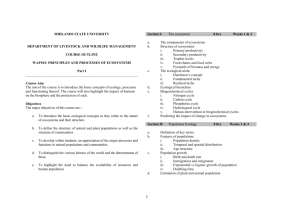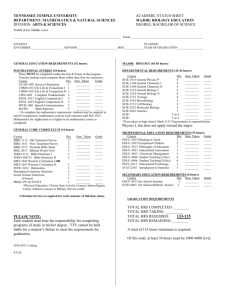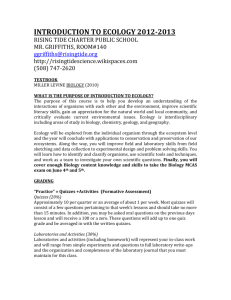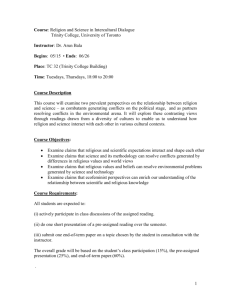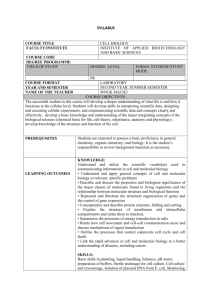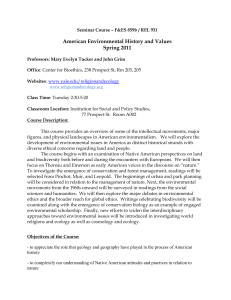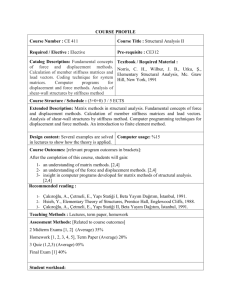SAMPLE SYLLABUS
advertisement
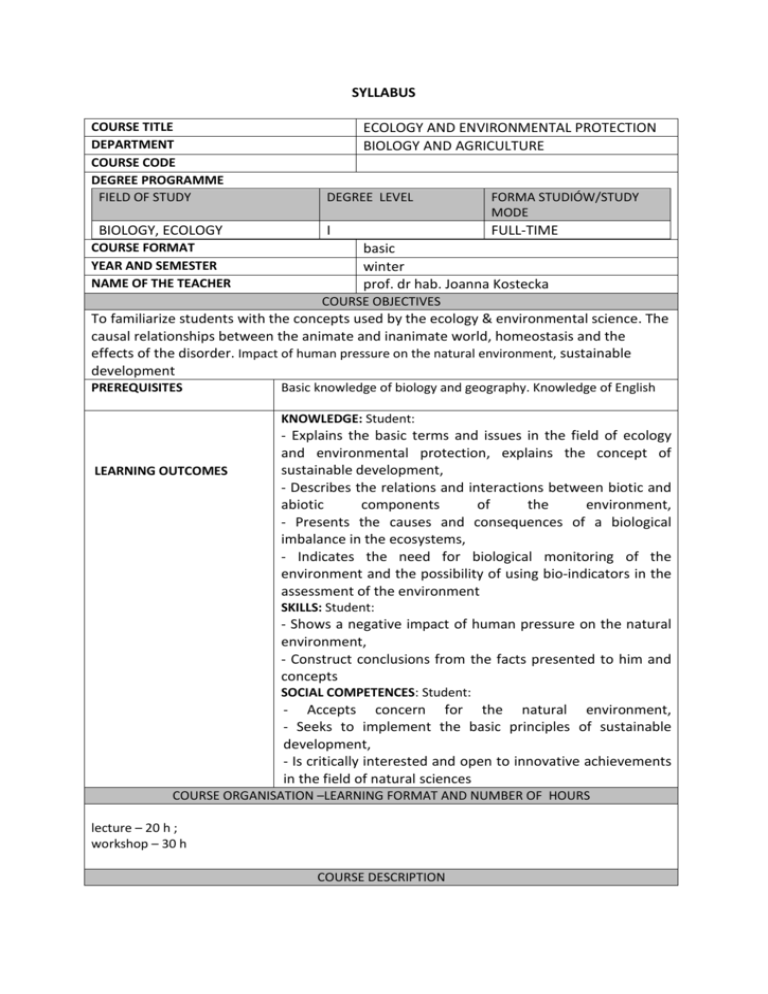
SYLLABUS COURSE TITLE DEPARTMENT COURSE CODE DEGREE PROGRAMME FIELD OF STUDY BIOLOGY, ECOLOGY COURSE FORMAT YEAR AND SEMESTER NAME OF THE TEACHER ECOLOGY AND ENVIRONMENTAL PROTECTION BIOLOGY AND AGRICULTURE DEGREE LEVEL FORMA STUDIÓW/STUDY MODE I FULL-TIME basic winter prof. dr hab. Joanna Kostecka COURSE OBJECTIVES To familiarize students with the concepts used by the ecology & environmental science. The causal relationships between the animate and inanimate world, homeostasis and the effects of the disorder. Impact of human pressure on the natural environment, sustainable development PREREQUISITES Basic knowledge of biology and geography. Knowledge of English KNOWLEDGE: Student: LEARNING OUTCOMES - Explains the basic terms and issues in the field of ecology and environmental protection, explains the concept of sustainable development, - Describes the relations and interactions between biotic and abiotic components of the environment, - Presents the causes and consequences of a biological imbalance in the ecosystems, - Indicates the need for biological monitoring of the environment and the possibility of using bio-indicators in the assessment of the environment SKILLS: Student: - Shows a negative impact of human pressure on the natural environment, - Construct conclusions from the facts presented to him and concepts SOCIAL COMPETENCES: Student: - Accepts concern for the natural environment, - Seeks to implement the basic principles of sustainable development, - Is critically interested and open to innovative achievements in the field of natural sciences COURSE ORGANISATION –LEARNING FORMAT AND NUMBER OF HOURS lecture – 20 h ; workshop – 30 h COURSE DESCRIPTION Ecology, a science for everybody - but not an easy science, environmental protection, nature protection, Sustainable Development, why do we need it?, Decade of Education for SD (2005-2014), SD attributes, Indicators of anthropo-pressure („ecological foot print”), Different levels of the life organization. Population and its characteristics, The food chain, the matter and energy flow, Connections between the organisms, biomes. Homeostasis and its mechanisms/ homeostatic factors, The air pollution, The water pollution, The soil degradation. Life in the soil, Vermiculture and the possibility to use it in sustainable tourism. The principles of the case study. Examples. METHODS OF INSTRUCTION REQUIREMENTS AND ASSESSMENTS GRADING SYSTEM TOTAL STUDENT WORKLOAD NEEDED TO ACHIEVE EXPECTED LEARNING OUTCOMES EXPRESSED IN TIME AND ECTS CREDIT POINTS LANGUAGE OF INSTRUCTION MATERIALS Lecture with multimedia presentation, discussion, brainstorming, case studies, problem solving Lecture - assessment, oral examination Workshop - credit to the assessment (presence and participation in solving tasks) Lecture - the student will receive credit after the exam (sets of questions) at least 60% of the maximum number of points Workshop - the student will receive credit after participating in 60% of classes and the development and presentation of the case study Lectures: Workshop: Indoor work: Exam: In total: English 20 hrs 30 hrs 30 hrs 2 hrs 82 hrs 4 ECTS PRIMARY OR REQUIRED BOOKS/READINGS: Environmental Protection http://eponline.com/home.aspx (online magazine): SUPPLEMENTAL OR OPTIONAL BOOKS/READINGS: Sustainable Development (online magazine): http://free.download2.net/s/sustainable-development-online-pdf Kostecka J. 2009. Selected aspects of the significance of earthworms in the context of sustainable waste management. In: Contemporary Problems of Management and Environmental Protection. W. Sądej (ed.) Sevages and waste materials in environment. Olsztyn. s. 153-170. COURSE COORDINATOR ’S SIGNATURE DEPARTMENT HEAD ’S SIGNATURE
